Megaphasma and other giant monsters
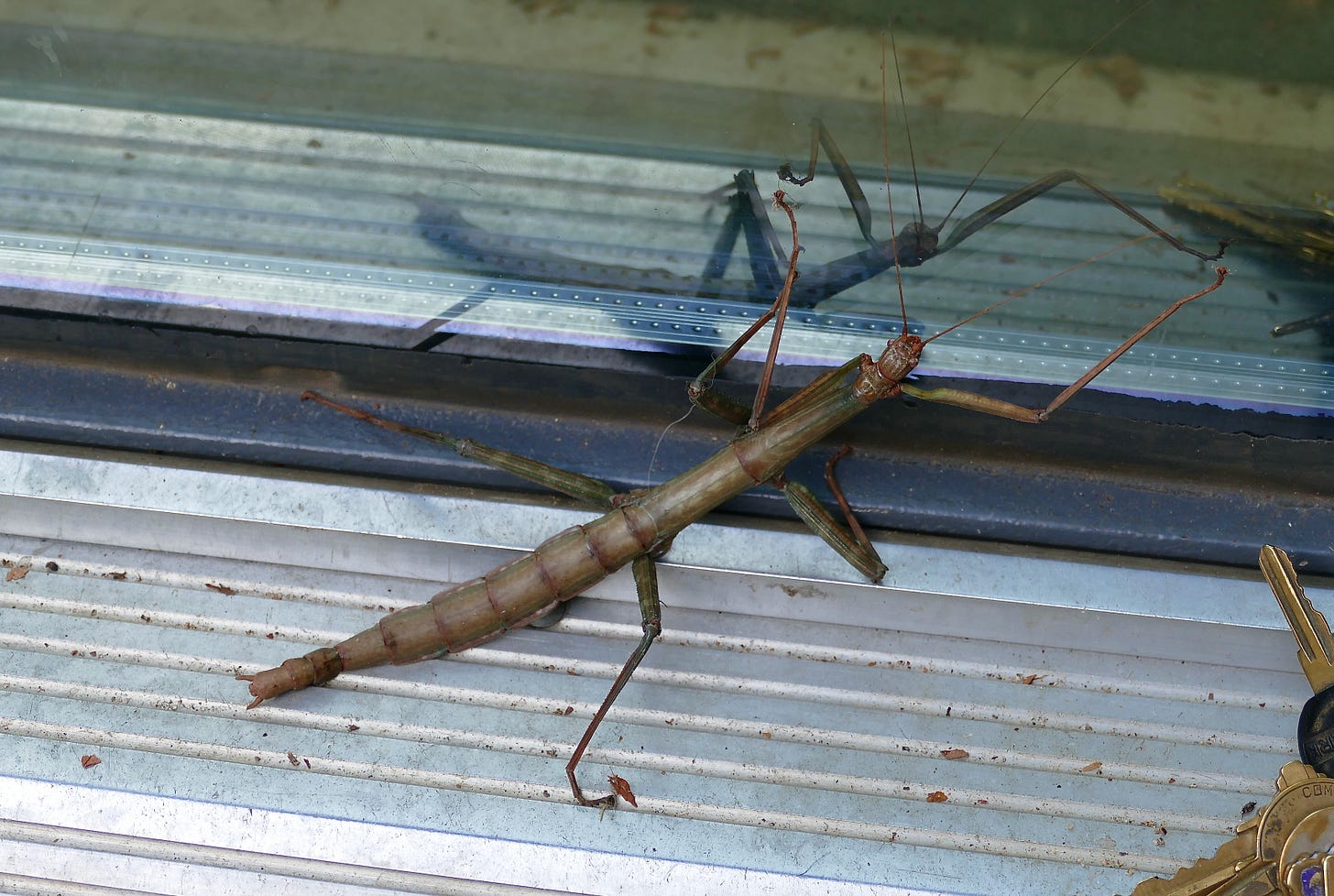
Saturday morning we returned from our walk to find the biggest insect I have ever seen in the wild clawing at our front door. A giant walkingstick (I think), Megaphasma dentricus—the longest insect in North America, most commonly found here in Central Texas. We get tons of Texas walkingsticks, which are about half the size, and which love to copulate on our door frames, but I can’t recall the last time I saw one of these. It was close to seven inches long, and about as thick as my pinkie finger. Epic, and wonderful to know our green roof and wild yard is providing habitat for such beautiful creatures.
When I picked it up to move it to a safe space, I got a sense of how complex and almost machine-like its movement is—the weight of its exoskeleton and the awkward geometry of its joints and body hinges, designed for slowly navigating through foliage, not pressed steel and milled aluminum. The scientific experts always say the leviathan bugs of the old monster movies could never exist in real life because they would be defeated by physics at that scale. But when you see a bug this big, and feel it move across your skin, you wonder. Or maybe it’s just because I have kaiju on the brain this week.
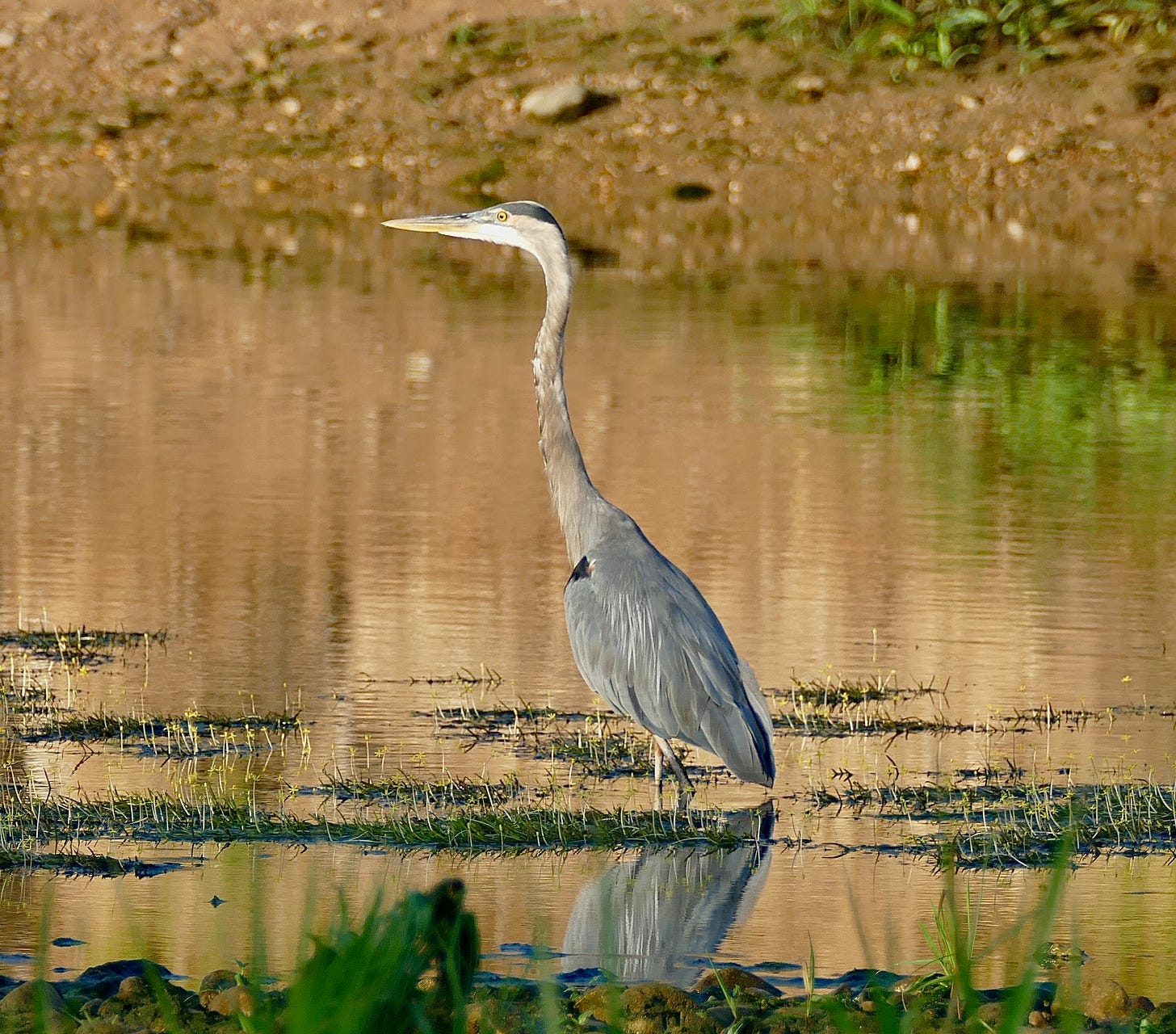
August mornings are beautiful on the urban river. Right at daybreak, the big birds are out hunting in the shallows before the dam releases at mid-day. The water is crystal clear, the fish are on the move, and the early light of the hot days brings out the green of the flora and dials in the orange undertones along the waterline. The foliage on the banks is so thick it’s easier to walk in the water, as well as cooler.
Friday my daughter and I walked down there late in the morning, right before lunchtime. She’s just a few months into walking, and this was the first time she took to the trail herself. She was quite enthusiastic, and we took a look at lots of things on the trail itself, including the ant lion lairs in the dust, and a few small holes of burrowing creatures. At one such hole, I showed her the trick of taking a piece of dried grass to measure its depth and see if anything comes out. She then copied me, and when she pulled the grass out she went to bite on the end, as if expressing some primate instinct to pull ants from the mound and eat them.
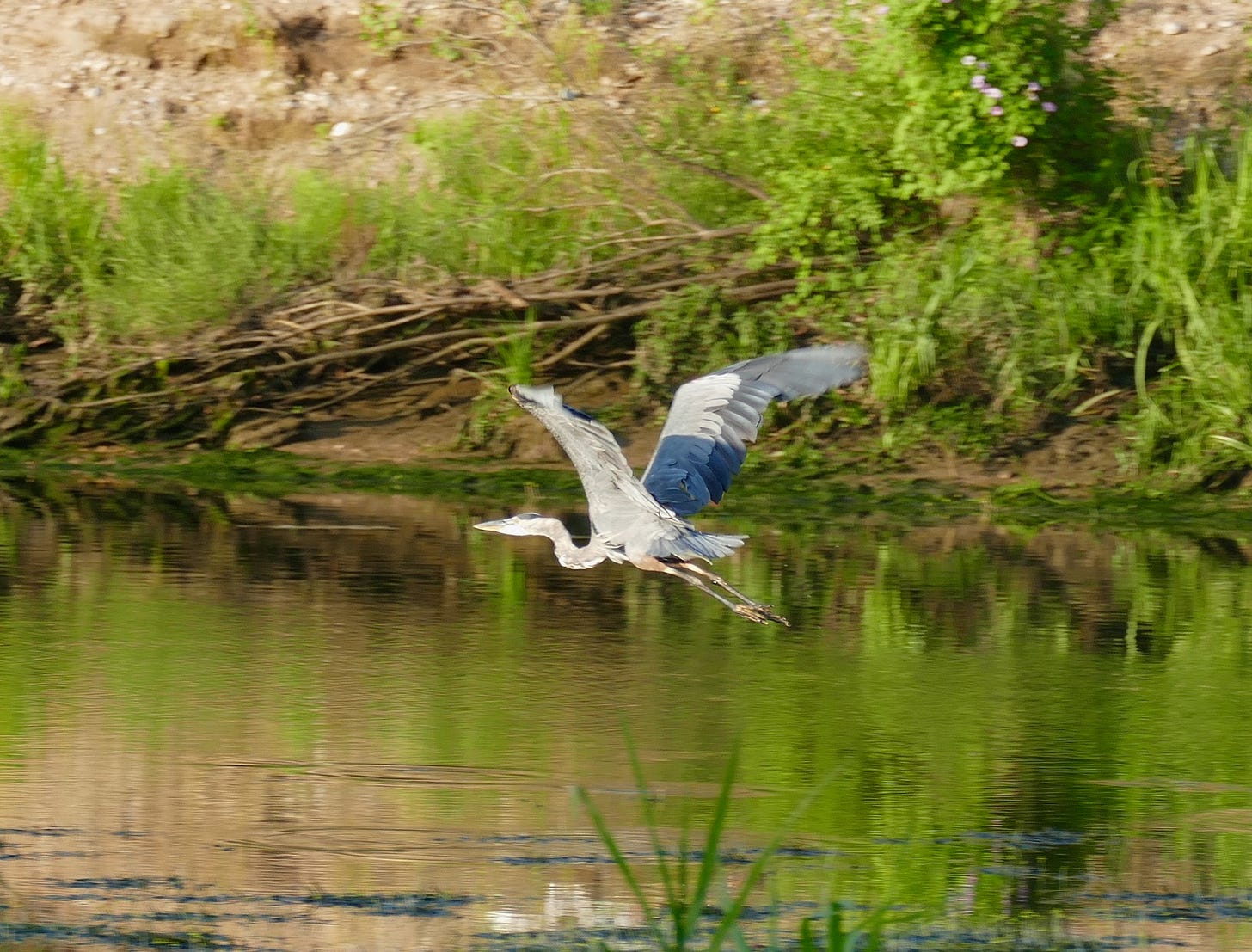
There’s a public park on the opposite side of the river, with a kind of beach where a mis-engineered creek drains out, and in pandemic summer with the pools closed and triple-digit temps most days, it’s a popular place to hang. In the morning before the afternoon releases from the dam, the water is shallow enough to walk in, and people set their beach chairs right in the middle of the river. Friday it was mostly families and dogs, and one fisherman casting in a deeper lagoon where the grass carp loiter, in up to his shoulders.
On our side the bank is rocky, an area that a few decades ago was dredged for gravel. But now it’s lush with riparian plants along the waterline, better adapted to the dam releases than the humans, who often get stranded, like the trio I helped some cops find stuck in a flooded tree weekend before last. Friday when we stepped out of the woods around a quarter after eleven we found an egret busily popping the guppy-sized bait fish from the shallows. And then in the shadows we noticed a juvenile green heron. Third one I’ve seen this summer, but the first one the juvenile human who was with me has ever seen. It was almost as unwary as she is, though it did not try to say hello to any of the dogs.
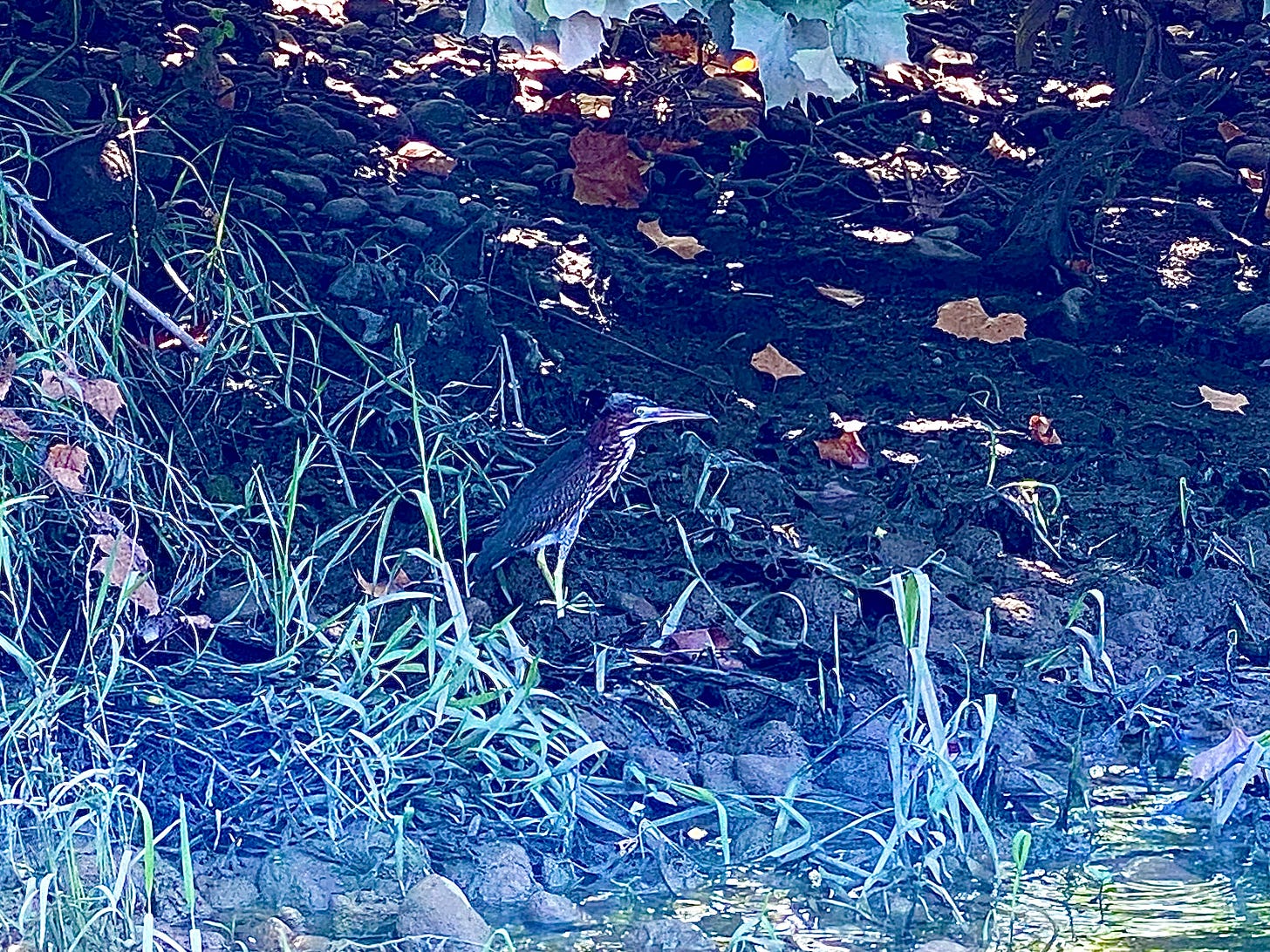
I carried baby as we walked in the river. I think it’s pretty clean, but don’t really know, and running water is never a good idea with toddlers who can’t yet swim. But it was sparkling clear, the bottom lined with green water grasses soaking up the sun and discarded shells casting back purple shimmers. The water was starting to rise as we walked, and we went as far as a little island shoal, where she growl-laughed as she learned the kerplunking joy of tossing rocks in the water. There were still some flowers in bloom as we walked back closer to the first high-water line, and stopped to investigate every one until she was ready to go back. Nature is easier to appreciate through the aperture of a child’s eye.
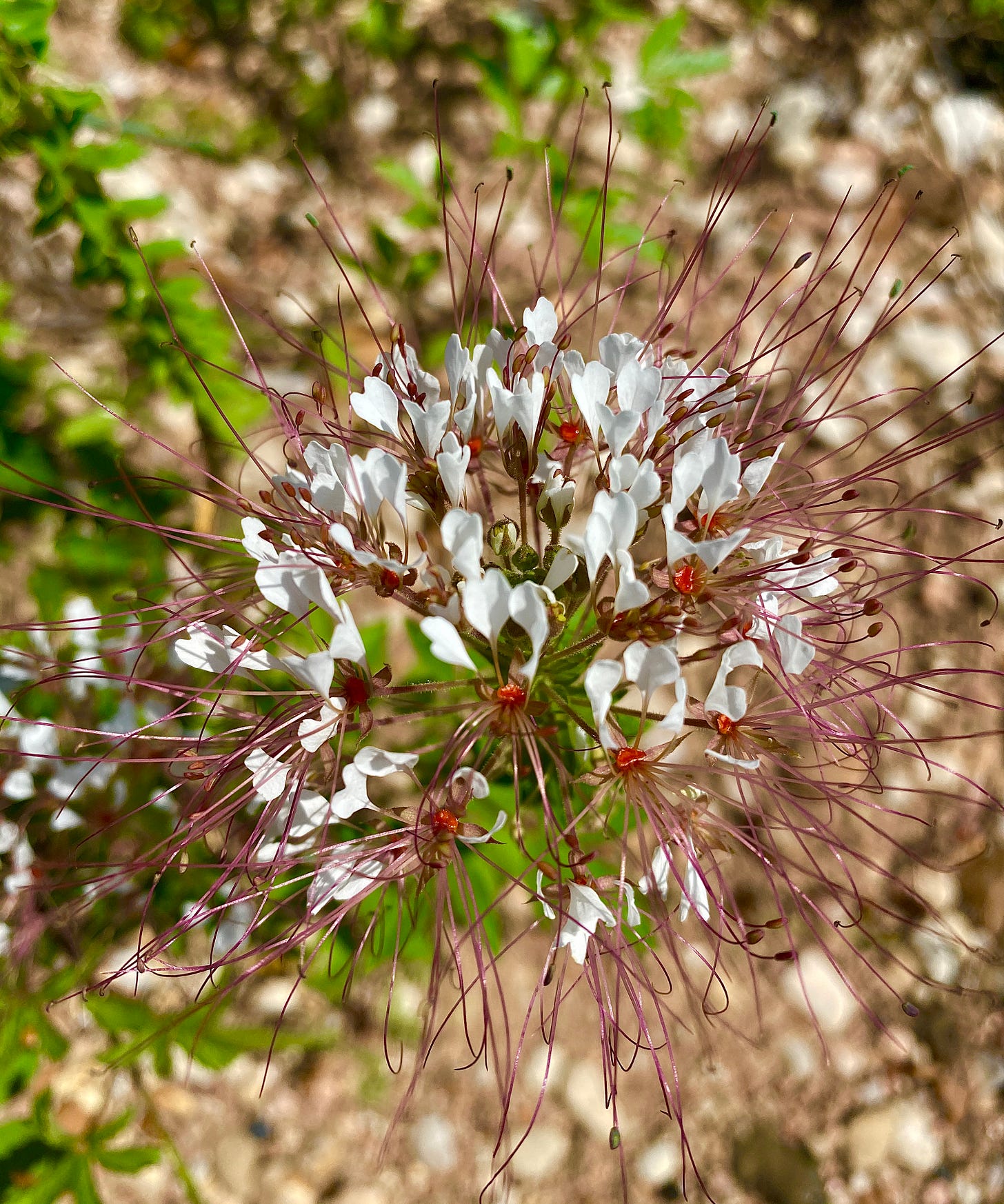
Back home, baby has begun discovering some of the tiny creatures that share our house. She is especially curious about the creatures that do interesting tricks, like the roly-poly pillbugs and millipedes that curl up at her touch. Pillbugs are cute in the eyes of most kids. So cute that my son, when he was four, adopted them as pets and had a pillbug-themed birthday party at which we even wrangled a pillbug race. Maybe kids can instinctively sense their difference from other bugs—that pillbugs are crustaceans, creatures from the deep who still have gills even though they are living in our dirt.
But the millipedes are the ones who have been out in force this week. Up to greet the early riser with their creepy locomotion across the concrete floors, always getting farther faster than you would think. They inhabit the leaf litter, off a diet of dead plant matter. And when you have a wild green roof, there is a lot of that to sustain them, especially come August as the wildflowers of spring die off and the grasses enter into summer dormancy. They also like it dry, so if you introduce rain like we had last week, they may find their way inside—something hey are very good at, usually climbing over the thresholds and under the doors with the aimless determination of tiny zombies. They almost never find their way back out, walking walking walking across the floor and up the walls and sometimes on the ceiling until they die of starvation and express the rare odor of a tiny arthropod that has its own cyanide gland.
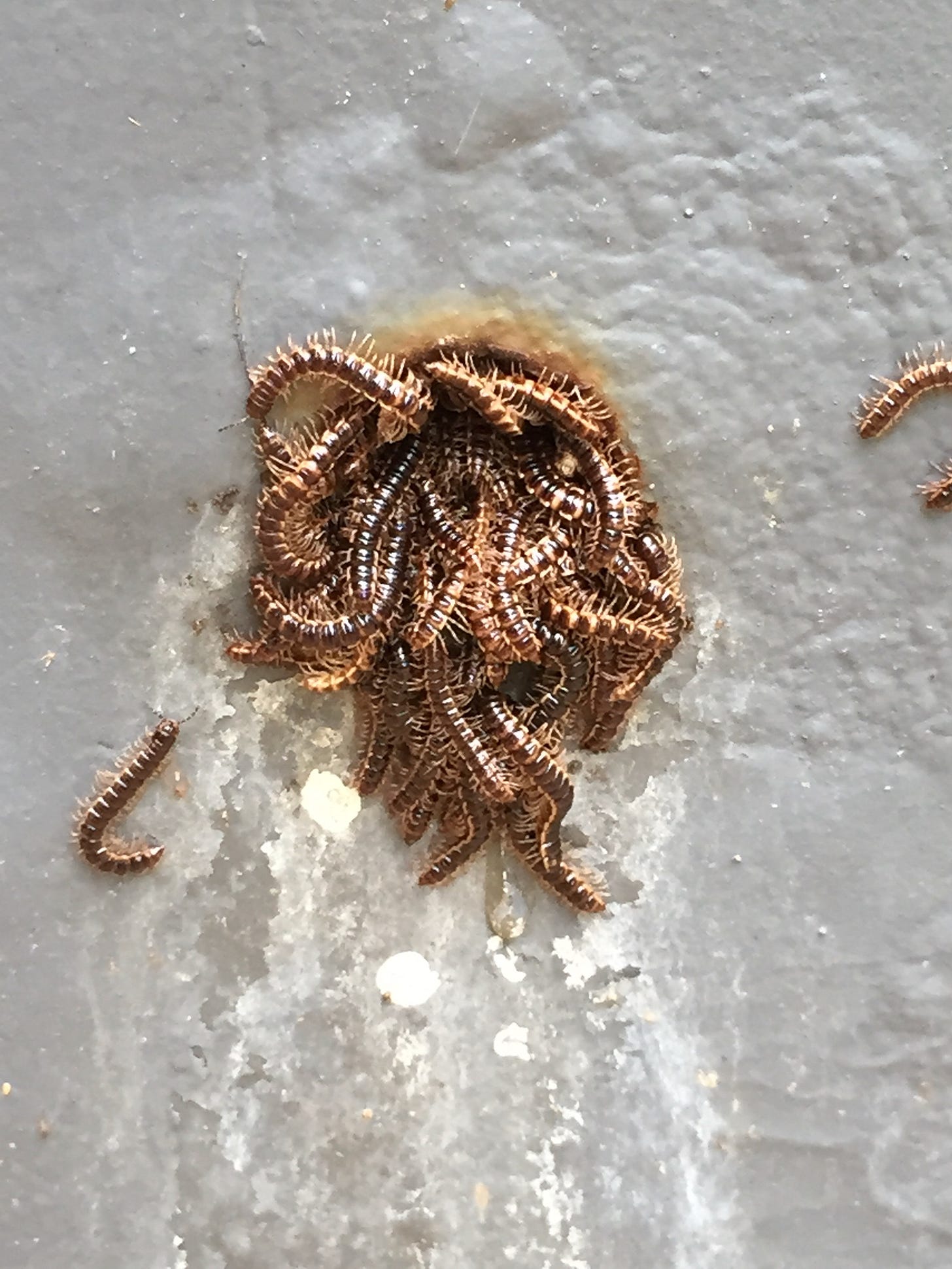
Five years ago we had a full-on infestation, in a May of persistent heavy rains. At night they would cover the patio, fill the corners, seep in masses from the drain holes. We returned from a long weekend in New York to find the living room floor blanketed with their corpses, and had to buy a Shop Vac and masks to manage the clean-up. In the years since, a healthier equilibrium has thankfully been restored. But it was an experience of what it can be like when a rapidly reproducing insect finds itself in optimal conditions without any natural check on its population. It made me realize the Ballardian ending to the story of our feral house experiment would have me taking the backpack propane torch to the roof and burning the whole place down in order to clean it of the vermin I had incubated.
Smog monsters, space ants and slaughterhouse refugees
The hothouse millipede, Oxidus gracilis, is thought to have originated in Japan, but has now colonized most of the planet. You don’t need a green roof to experience the way they can turn into prodigious little monsters of your domestic reality under the right conditions.
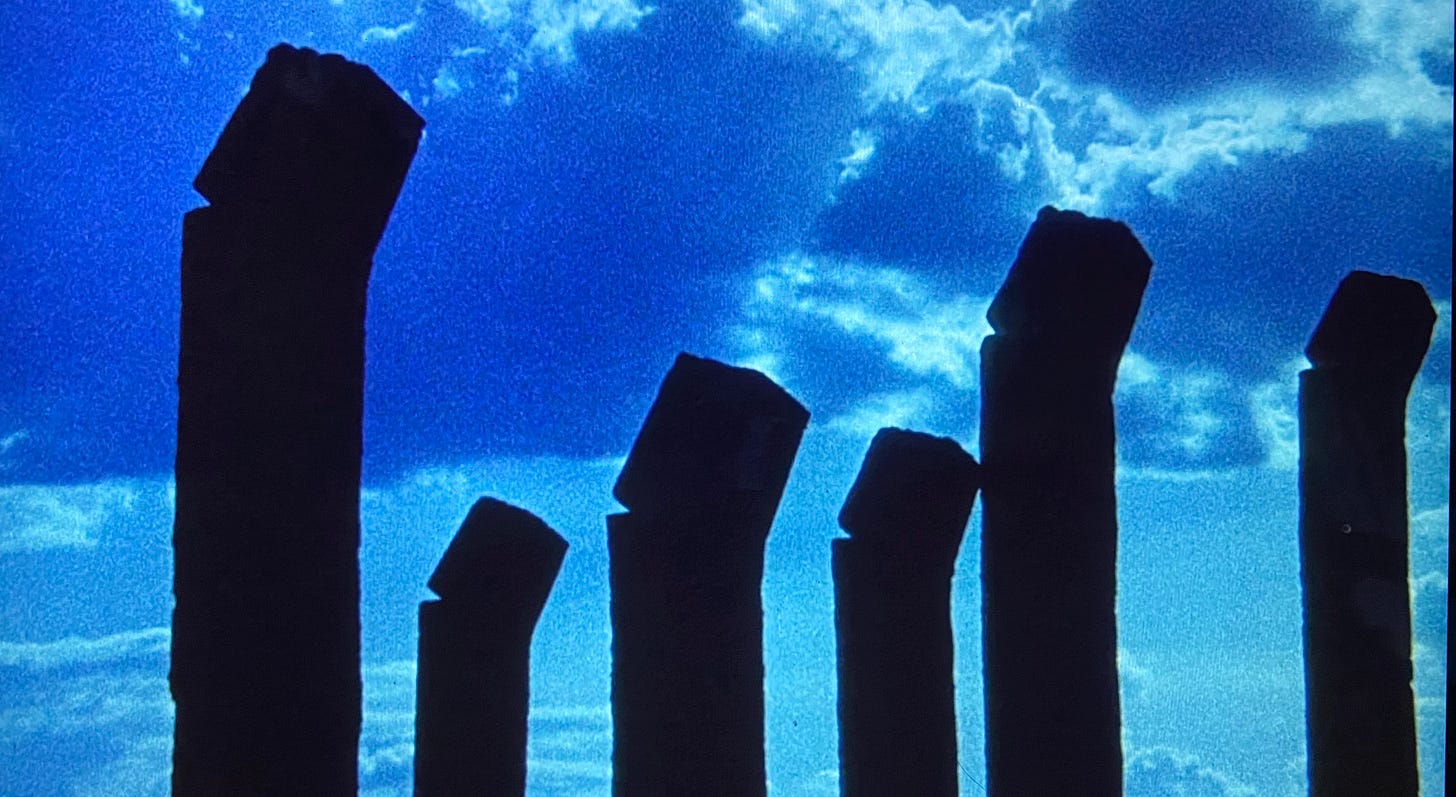
This week’s hurricane had me thinking about different Japanese monsters. When my son was little, he loved Godzilla movies. When he was five we caught the Saturday kids’ matinee of the film festival Quentin Tarantino used to host at the original Alamo Drafthouse location, and after the director’s manic introduction and screening of his personal print of Destroy All Monsters, there was no turning back. We still have a box of VHS kaiju in a storage locker, waiting the moment of their return.

Godzilla rarely made it to Des Moines when I was a kid, so it was all new to me as well as we discovered the rich body of movies in which guys in rubber suits wrestle with each other and destroy epic models of great cities in the process. I only really understood them when I was in a museum in Tokyo and came upon a 19th century woodblock print with the image of a giant catfish destroying old Tokyo. This was Namazu, a creature that lives in the mud under the islands of Japan. When he is allowed by his mythic guardian to thrash about, earthquakes result. One of many folkloric embodiments of nature’s power to rebalance the world.
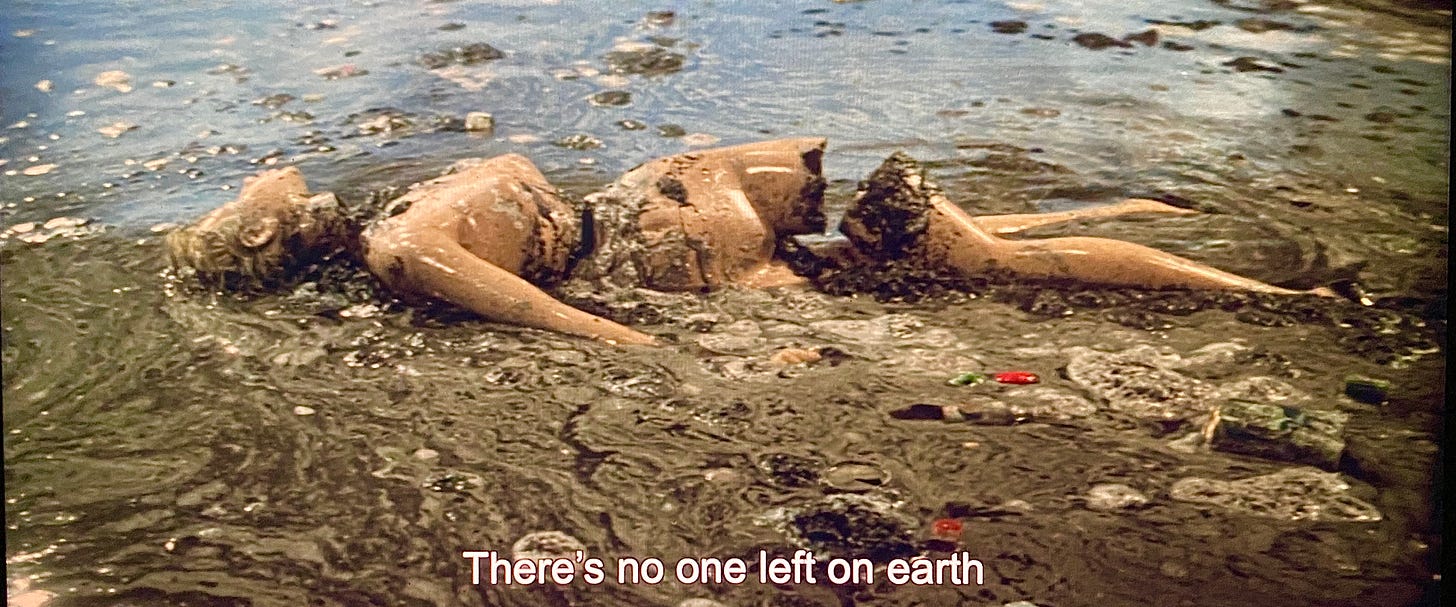
I only saw one of those kaiju movies in the theater as a kid. Godzilla v. The Smog Monster, which I remember thinking was really cheesy and disappointing at the time. It was still cheesy when I watched it again on the Criterion Channel this week, part of my summer-long binge of ecologically themed movies and books, but I had a deeper appreciation of its power. The Smog Monster, aka Hedorah (the Japanese word for sludge), is a tadpole that mutates into a monster due to the rampant industrial pollution of the bay where it matures. There’s no subtlety to the metaphor as Hedorah sucks on the smokestacks before crushing them, and maybe that’s why it works so well as a simple expression of our sense of climate justice.
Reading up on the movie also produced this Wikipedia fun fact:
Kenpachiro Satsuma, the actor who played Hedorah, was struck with appendicitis during the production. Doctors were forced to perform the appendectomy while he was still wearing the Hedorah suit, due to the length of time it took to take off. During the operation, Satsuma learned that painkillers had no effect on him.[7]
A story whose insanity you can only really appreciate if you have seen the suit.
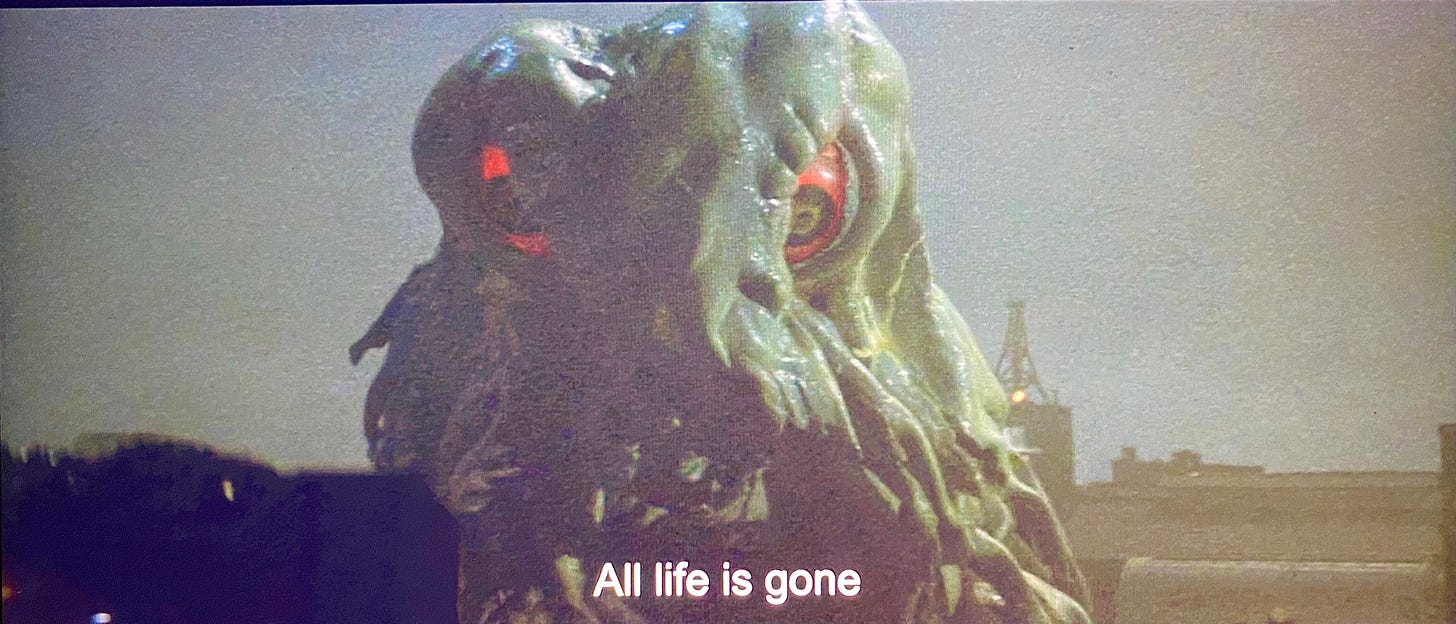
Americans aren’t very good at telling those kinds of giant monster stories, even though those stories resonate with us because of the truths they tell. Our best eco-horrors are usually business stories at their core, infused with a clear sense of direct human agency, in which capitalism is the monster and nature is the victim that rarely gets its revenge.
This week’s local news had a story that almost managed a kaiju-level metaphoric power, as the Austin American-Statesman reported that the Circuit of the Americas, the recently constructed Formula One race track dedicated to the adoration of high-speed fossil fuel consumption by the global business class, had been converted into an emergency resettlement camp for refugees from storms caused by our pumping of hydrocarbons into the atmosphere. As of Wednesday afternoon, it had filled to capacity on the day it opened. The monster, it appears, went to Louisiana instead.
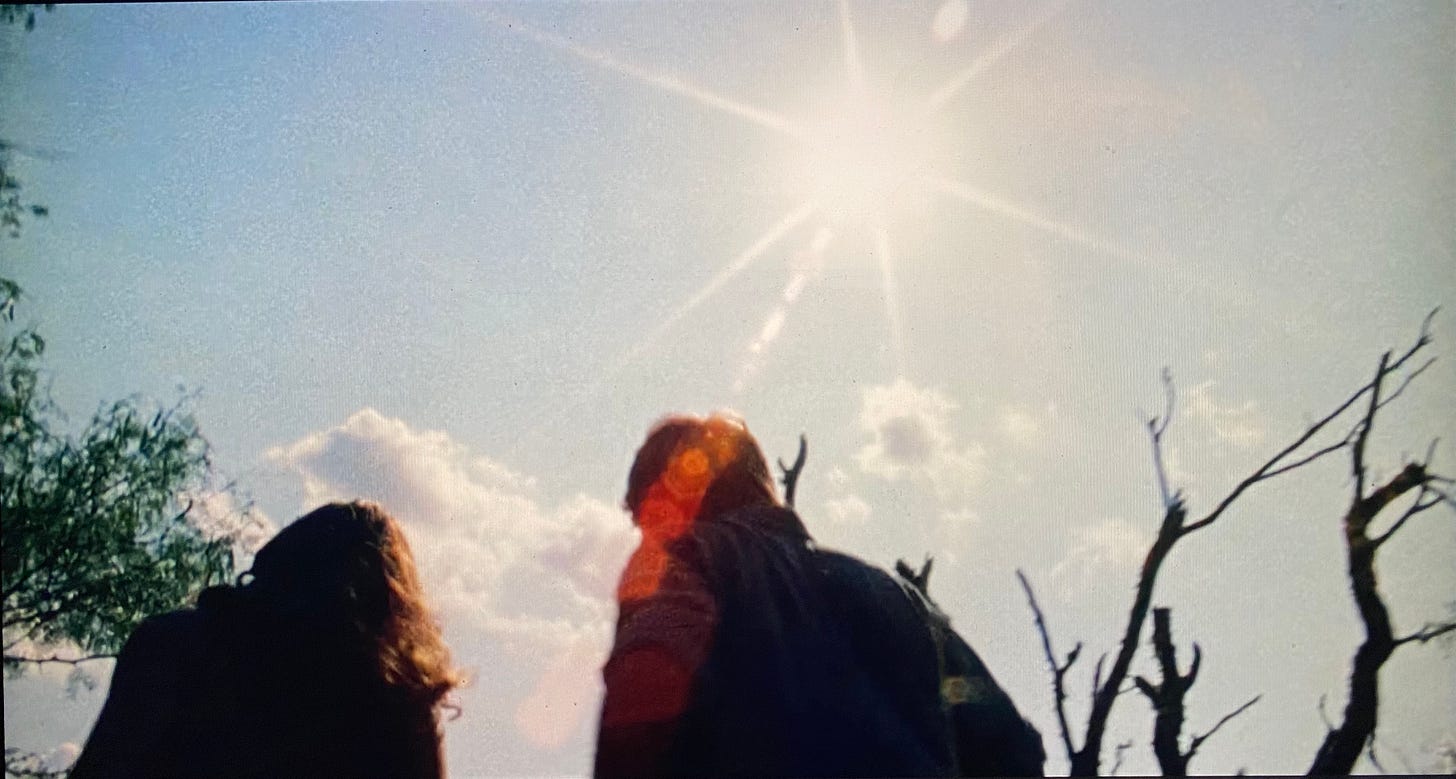
Further reading and viewing
I watched three other works of 1970s eco-horror this week. Two were about bugs taking over the world, and one was about Texans gone wild.
Phase IV (1974) is a far-out story of scientists studying a colony of ants that has been imbued with an enigmatic alien intelligence. The only feature from the famed title designer Saul Bass, it has some amazing compositions, and manages the difficult feat of giving the insects who are the real stars of the movie a depth of characterization without narration or anthropomorphism. I wrote a thread about it on my Twitter feed, if you’re interested. It’s also the movie that apparently invented crop circles, providing this image of anthill geometry two years before the first real ones appeared in England:
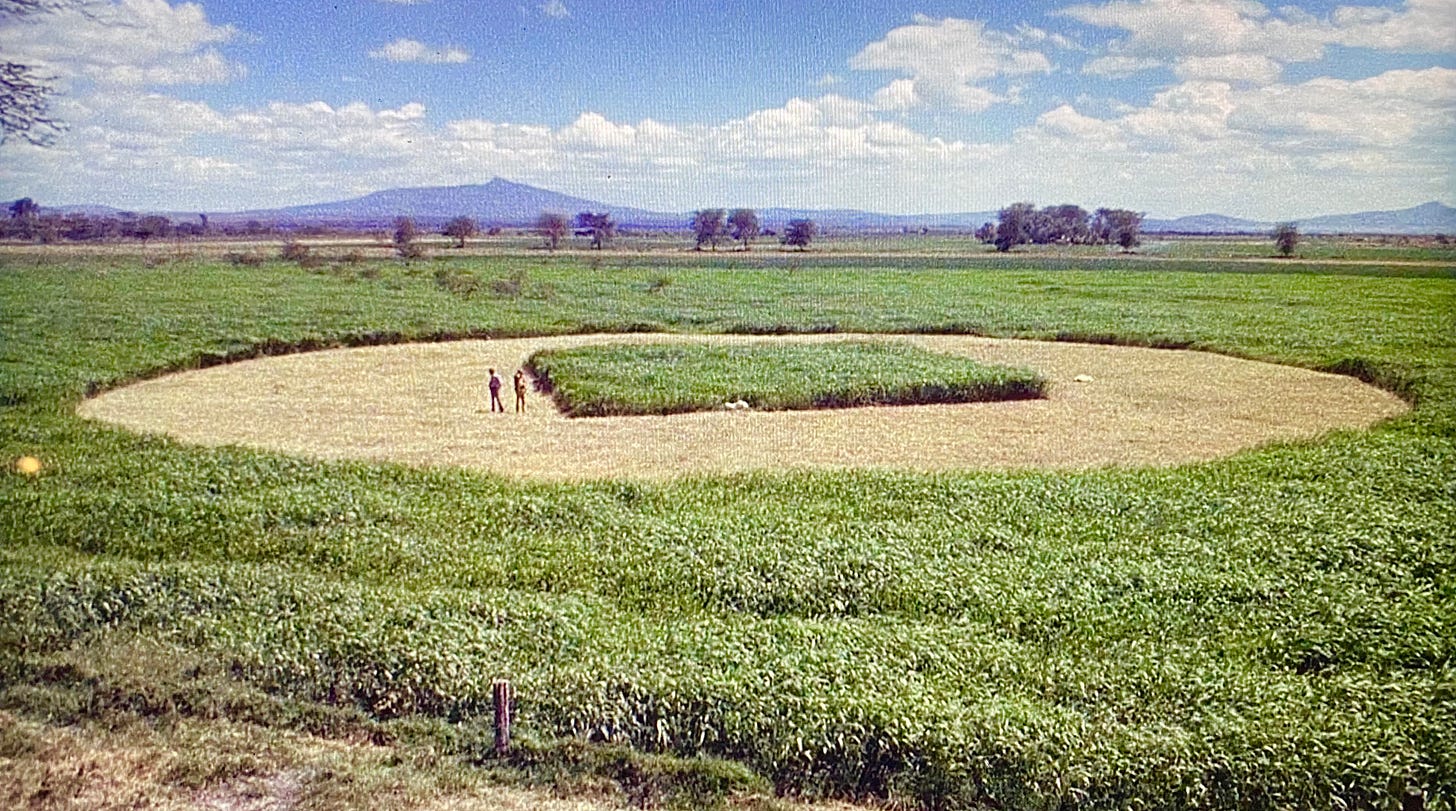
The Hellstrom Chronicle (1971) is a faux documentary arguing that insects will defeat humanity in the struggle for dominance of the planetary environment. The insect cinematography is amazing, shot by the same wildlife photographer who shot the ants for Phase IV, Ken Middleham. I had seen this on TV as a kid, and thought it was a real documentary. Once you’re in on the joke, you don’t need a feature-length movie to get it.
Saturday night I screened The Texas Chain Saw Massacre, a movie that I have always steered clear of as one of those people who avoids true horror, especially the kind that takes pleasure in showing human violence and cruelty. But I had seen a GIF meme recently of Leatherface dancing in the Texas sun, and got the idea it might have a healthy dose of Texas ecology in it. It does, along with a lot of Texas natural history objects, many of which look a lot like the things we accumulate around here.
On the lighter side, Godzilla v. Hedorah (1971) is available for streaming here at the Criterion Channel.
The New Yorker has an excellent piece this week by Amia Srinivasan, “What Have We Done to the Whale?” that deals with that very real giant monster of the deep, and how we are the real monster.
More on the giant walkingstick Megaphasma dentricus at iNaturalist.
I quite enjoyed The Technological Landscape, the latest subscription installment in Reading List, the newsletter of writer and critic Andrew Liptak, who in this new piece couples his background in geology with his science fictional gaze to explore the New England landscape where he lives.
Lastly, speaking of the violence of the Texas landscape, I got permission from my friend and neighbor (and Field Notes reader and frequent inspiration) J. David Moriaty to share this awesome picture he got of two anoles in mortal combat.
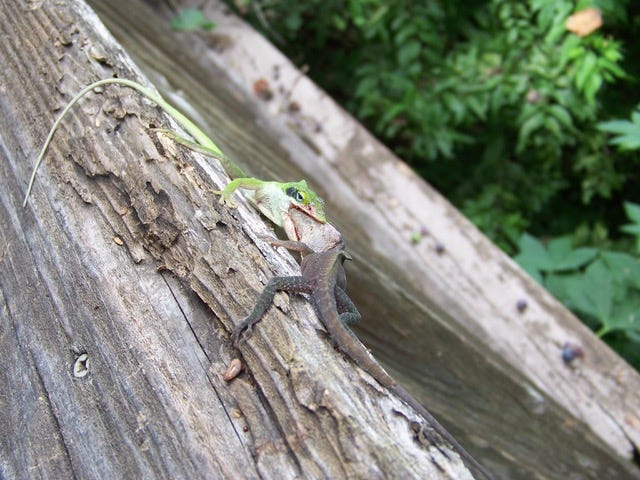
Dave’s caption tells the story:
The brown lizard won, but not conclusively. He was biting the green one's tongue. They try to detach the other’s tail, for a conclusive win. The tail will regenerate, but not in its former glory. No female will mate with a male so disfigured.
Have a sunny week.



Fascinating read, as usual.